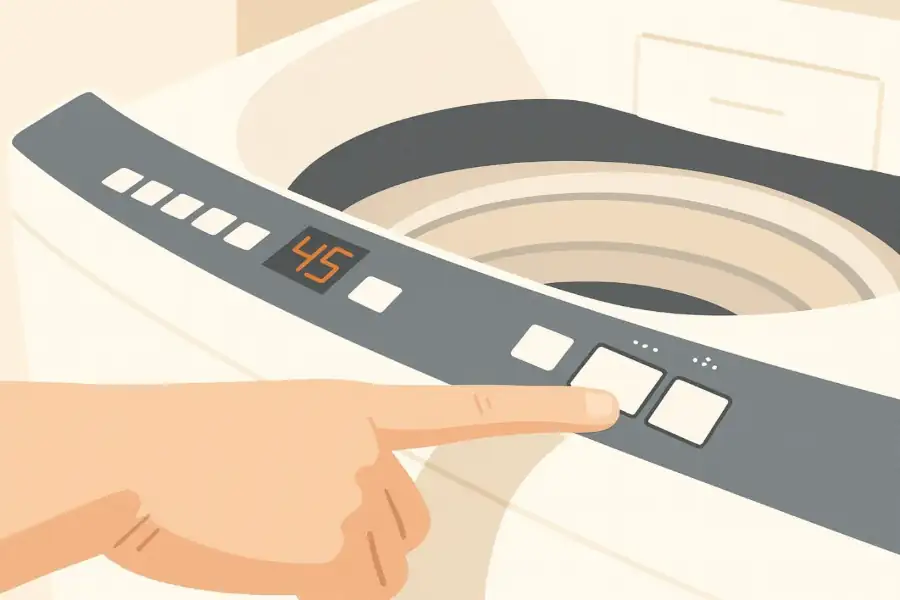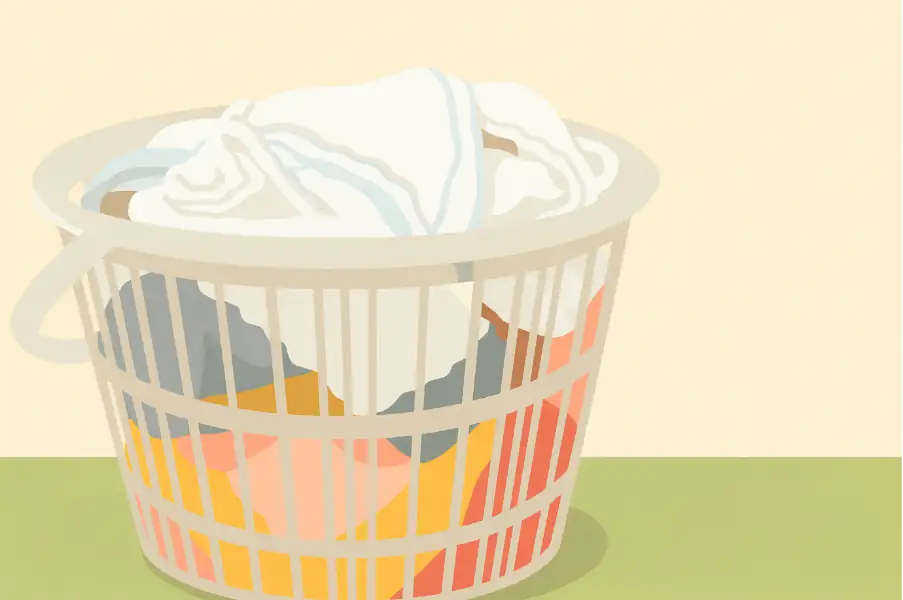When it rains continuously, the humidity increases, and many people find that their laundry just won’t dry. For clothes to dry properly, the right conditions for humidity, temperature, and airflow must be met.
However, when it rains a lot, the humidity in the air increases, making it difficult for the moisture in the clothes to evaporate. Furthermore, when the weather is bad, you can’t hang your laundry outside to dry, leaving behind that unpleasant smell of damp clothes.
In this article, we’ll share some practical laundry tips you can rely on even when it’s raining or humid. If you’re tired of your laundry not drying or can’t stand the smell of damp laundry, be sure to check it out!
At Village House, we offer over 1,000 rental properties all across Japan, with rent starting from just 20,000 yen per month. If you’re looking for a rental property, be sure to check out our website!
Leave some space between each item when hanging laundry

To dry laundry quickly when hanging indoors, it’s essential to create proper airflow. By leaving enough space between each piece of clothing, air can circulate more easily and help your laundry dry faster. It is ideal to leave at least 15 cm between hangers.
Thick garments tend to retain more moisture, so hanging them side-by-side can often trap moisture and make them difficult to dry. In such cases, alternating between thick and thin items when hanging laundry will improve airflow and make them dry more evenly.
Winter, with its low temperatures and high humidity, can be a difficult season for laundry to dry. However, with careful consideration for the timing and drying techniques, it’s still possible to get your laundry completely dry, even when hanging it outside.
In winter, it’s best to hang laundry between 10 AM to 3 PM, when humidity tends to drop. Letting your clothes soak up plenty of sunlight during the day can help offset the low temperatures. However, moisture tends to build up after 3 PM, so be sure to bring them in before that.
Dealing with laundry odors

The unpleasant smell of damp clothes is caused by the proliferation of bacteria. This unpleasant odor can be reduced by thoroughly removing bacteria during the washing process using detergents and fabric softeners with antibacterial and disinfectant properties, or by using detergents specifically designed for drying indoors.
Another solution to fight odors is to use citric acid. Citric acid has antibacterial and antimicrobial properties and can be used as an alternative to fabric softener. A good rule of thumb is to use about 10 grams of citric acid per 10 liters of water. Spraying a disinfectant and deodorizing spray on laundry before hanging it out to dry is also effective. This will keep it hygienic and prevent unpleasant odors from developing.
If you’re concerned about odors or stains on your laundry, try soaking it in water at 40-50°C for about 30 minutes before washing. This will thoroughly remove tough grime like sebum, sweat, and bacteria.
For even better results, dissolve your regular laundry detergent into the soaking solution. If the odors are especially strong, consider using a powdered oxygen-based bleach to boost the deodorizing and disinfecting effects. This is a recommended washing method for clothes that are prone to developing odors, such as towels and sportswear.
Increase the spin cycle time

The key to drying laundry faster is to draw out as much moisture as possible before hanging it out to dry. A simple way to do this is by adjusting the spin cycle settings during your wash.
For example, you can remove more moisture from your laundry by increasing the spin cycle time. This is a particularly effective method during seasons when it’s difficult to dry clothes, such as the rainy season and winter.
Another effective trick is to run the spin cycle twice. After your regular wash finishes, remove items that wrinkle easily (such as shirts or blouses) first, then run a second spin cycle for the remaining items. This will help thicker fabrics like towels and jeans dry more quickly.
Use a dehumidifier or fan

When drying clothes indoors, using a dehumidifier or electric fan can make a big difference. Indoor drying tends to be particularly humid and lacks airflow, which slows down the drying process. This is where dehumidifiers and electric fans come in handy.
A dehumidifier is an appliance that efficiently removes moisture from the air, preventing humidity from increasing and creating a better environment for drying clothes indoors. For better results, position the dehumidifier to blow toward the bottom of the laundry in order to remove moisture directly from the clothes more effectively.
On the other hand, fans and air circulators help circulate air and speed up evaporation by blowing across the surface of your clothes. Directing airflow toward the laundry speeds up drying time, and when used together with a dehumidifier, the drying process becomes even more efficient. When hanging your laundry, be sure to leave enough space between each item to allow for proper airflow.
As such, using a dehumidifier and a fan together is ideal for drying indoors. Regardless of the weather, you can dry your laundry efficiently and comfortably.
Schedule your laundry based on the weather forecast

Even during periods of continuous rain, there are still opportunities to dry your laundry as long as you check the weather frequently. The key is not to miss any clear skies in the morning. The “Hourly Forecast” and “Laundry Index” features on the weather app are especially useful for keeping track of small changes throughout the day.
If you check the weather the night before and prepare to start your laundry early in the morning, you’ll be able to hang your laundry out to dry even during brief sunny intervals. Even on rainy days, if there’s good airflow on your balcony, you can still dry your clothes by hanging them in a covered area.
Wash laundry in smaller amounts instead of overloading

To prevent the damp smell from developing when drying laundry indoors, it’s important to thoroughly remove dirt during the washing process. If dirt or body oils remain on the fabric, they become a food source for bacteria, making it easier for odors to develop while the clothes are drying.
Be careful not to overload your washing machine. When too many clothes are crammed in, water and detergent may not reach every item evenly, reducing washing effectiveness. A good rule of thumb is to aim for the laundry load to be about 70–80% of the drum’s capacity to allow for proper water flow in order to remove dirt more efficiently.
How you handle your clothes before washing is also surprisingly important. If you toss damp clothes into an airtight laundry basket or plastic bag right after taking them off, humidity will build up, making it easier for bacteria to grow. Before washing, place your clothes in a well-ventilated basket or laundry hamper, and aim to wash them as soon as possible.
Source: Movement of Laundry Inside the Washing Machine by Load Size / Lidea – Official Lion Channel
At Village House, there are no security deposits, key money, handling fees, or renewal fees*. If you’re looking to save on initial costs, please feel free to contact us!
*Depending on the contract details and screening results, a security deposit may be required.
Related articles:

Hello, I’m Machiko Doi, a freelance writer who writes about housing and living in Japan.
I live in an 80-year-old house that I inherited from my grandparents along with my two shelter cats and daughter.
We live a relaxed life while repairing the house.
I like to cook vegetables from the garden and fresh fish caught by my father, and enjoy them with cold beer on a hot day or hot sake on a cold day.



